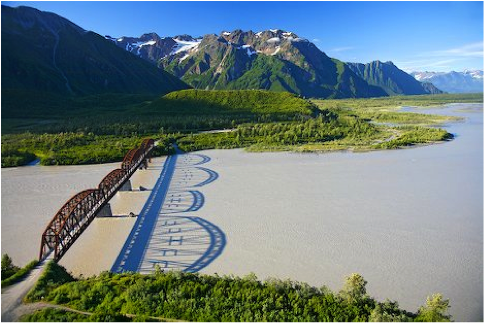Small Projects Year 1 (2012-2013)
Rendering of Dense, Point Cloud Data in a High Fidelity Driving Simulator
PIs: David Hurwitz, Michael Olsen (OSU)
Dates: 03/01/2012 – 11/01/2013
Final Project Report: PacTrans-10-OSU-Hurwitz
This project will develop tools to advance the use of 3D design technologies by departments of transportation. A two-dimensional (2D), paper-based methodology for infrastructure design is currently the most prevalent approach implemented by DOTs across the country. This method traditionally involves the coordination of a series of separate plan (horizontal) and profile (vertical) layouts. Unfortunately, 2D design is inherently limited for effective assessment of alternative designs, which is critical for evaluating optimal design outcomes. 2D infrastructure design also has the potential to emphasize the mobility of vehicular throughput to the detriment of alternative modes of transport. Oh and Stuerzlinger (2004) show an example of how a 3D, digital environment enables even novice users to create structurally complex scenes in the initial conceptual stage of design.
Second Generation Accessible Pedestrian Systems
PIs: Richard Wall, Denise Bauer (UI)
Dates: 03/01/2012 – 11/01/2013
Final Project Report: PacTrans-16-UI-Bauer
As signal timing plans and intersection infrastructure get ever more complex in attempts to reduce vehicle delays at intersections, pedestrians are confronted with pedestrian operations that are shoehorned into traffic plans designed so that pedestrians have minimal impact on the travel time for vehicles. Wide-radius right turn lanes and roundabouts have long been recognized as particularly dangerous intersection designs for pedestrians. Just as traffic controllers are programmed for customized operations at each intersection, so too must the systems that interact with pedestrians be customized to provide a consistency of expectation for operations.
Production of Renewable Diesel Fuel from Biologically Based Feedstocks
PI: Jon Van Gerpen (UI)
Dates: 03/01/2012 – 11/01/2013
Final Project Report: PacTrans-15-UI-Van Gerpen
Current petroleum-based transportation fuels are becoming increasingly expensive as petroleum is extracted from deeper waters, depleted fields, and politically unstable countries. In addition, these fossil fuels are identified as a significant source of CO2, which is responsible for global climate change. Alternative fuels produced from renewable biological sources are attractive options for displacing some of the petroleum-based fuels.
Estimating Future Flood Frequency and Magnitude in Basins Affected by Glacier Wastage
PI: Anna Liljedahl (UAF)
Dates: 03/01/2012 – 11/01/2013

Infrastructure, such as bridge crossings, require informed structural designs in order to be effective and reliable for decades. A typical bridge is intended to operate for 75 years or more, a period of time anticipated to exhibit a warming climate and, consequently, hydrologic changes (IPCC 2007). An understanding of present and future possible hydrologic conditions is necessary to avoid damage to critical infrastructure and costly disruptions to Alaska’s transportation network.
Phase II Structural Health Monitoring and Condition Assessment of Chulitna River Bridge
PI: J. Leroy Hulsey (UAF)
Dates: 03/01/2012 – 11/01/2013
Final Project Report: PacTrans-13-UAF-Hulsey
In this study, we will monitor the behavior of the Alaska Chulitna Bridge for the specific purpose of assisting the DOT in performing an accurate condition assessment of this bridge.
Based on the state-of-the-art SHM knowledge and technologies with a specific interest in those which could be used on bridges in cold, remote regions, the objective of this study is to provide important information for structural condition assessment of the Chulitna River Bridge.


